I.
John Naeher, director of operations at Christian Heritage School of Trumbull, Connecticut, was in balmy Orlando on a school errand in April 2015 when he received a distressing call.
Bob Dunn, the building inspector in Trumbull, had stopped over to look at the dilapidated house on the edge of campus that Christian Heritage had just purchased. To John’s horror, Bob delivered a troubling assessment over the phone: “This house probably can’t be saved. I don’t believe it’s structurally sound.”
John, responding with his characteristically quiet determination, asked, “Bob, can I meet you there with our engineer and architect next week? Let’s all look at this house with fresh eyes.”
As John, Bob, engineer Phil Katz, and architect Brian Snyder all met together to evaluate the house the following week, Bob required Phil to submit a stamped engineering plan to verify that the building would be structurally sound and meet the requirements of the state building code. Phil sent Bob his plan and Bob approved it, noting how impressed he was with Phil and John’s vision for saving the historic house. John was greatly relieved, but the hardest work still lay ahead of him and his team.
II.
The old beige colonial that stands at 511 White Plains Road in Trumbull, Connecticut, is situated across the street from Calvary Church and on the edge of Christian Heritage School, a commuter lot, and the Merritt Parkway. After Trumbull’s welcome sign, the house is the first sight in town for the many drivers who pull off exit 50 of the Merritt Parkway and turn north up White Plains every day.
The house is also one of the oldest houses in Trumbull, and may well be the oldest—it’s impossible to determine for sure, according to the Trumbull Historical Society. Nevertheless, there is one historical and architectural feature it possesses that no other home in Trumbull can boast: a Dutch gambrel roof with a beautiful curving sweep. There are only a few surviving homes in Connecticut with this historic feature, and it’s a mystery how this design made its way to Trumbull.
The Trumbull Historical Society has dated and plaqued the house for the year 1700. This early and even number was chosen because Thomas and Sarah Lake bought the property in 1695, and the house was built before White Plains Road was cleared in 1705. For the rest of that century, the Lake family occupied the house and surrounding seventy-five acres of farmland, which is why this whole lower portion of Trumbull was referred to as “Lakeville,” and the house dubbed “Lake Farm” at that time. After the Lake family, the farm was sold to David and Eunice Booth, and it remained the “Booth Homestead” throughout the 1800s.
In 1900, the farm was sold to Gustave Machalowski and stayed in the Machalowski family for most of the next half-century. When the Machalowskis owned the home, they ran a dairy farm called “White Plains Dairy,” and later kept a gravel pit on the property. During their time in the house, they also sold quite a bit of the farmland to the State of Connecticut for the construction of the Merritt Parkway.
After the Machalowskis, the house was bought by Emanuel and Florrie Sambrook in 1948 and sold to Josephine Barta and Frances Fenton in 1950. Josephine and Frances kept the house for seventeen years, finally selling it to Lucy Walsh and Cecelia Sinchak in the late sixties. Sometime in the middle 1900s, or perhaps at a few different points, the farmland was parceled out for development until the house and its property was consolidated to a mere 1.5 acres.
The Sinchak family owned the house throughout the later part of the 1900s and into the 2000s. After Cecelia’s death, relative Ronald Sinchak lived alone in the house until the time of his death in May of 2013. Ron left the house to his sisters, and they put it up for sale in the summer of 2013.
Because of its prime location in Trumbull at the intersection of White Plains Road and the Merritt Parkway, Ron’s sisters originally priced the house and its 1.5-acre property at just under one million dollars. In actuality, the house was worth only a small fraction of that value because of its shabby condition, poor residential location, and very limited zoning options.
Interested in the house for Christian Heritage, John Naeher requested an appraisal from a local realtor that placed the value of the house between $125,000 and $150,000. Knowing the practical value of the house and the school’s budget, CHS waited to see if the time would come for an opportune bid.
III.
A lover of antiques, collector of vintage Coca-Cola memorabilia, and avid reader of American history, John saw great potential in this old colonial that hadn’t been on the market since the late sixties. He could easily imagine its restoration possibilities, and the benefits it could hold for Trumbull and CHS. As he saw it, Trumbull would get one of their oldest surviving homes preserved for posterity, and CHS would get an amazing campus bookend. During his thirty-seven years working at Christian Heritage in Trumbull, John had seen several sites torn down for parking lots or new developments in town, and he hoped the historical moment embodied by this early American home could be kept intact.
Like John, CHS headmaster Brian Modarelli also believed the house at 511 White Plains Road, if purchased at the right price, could prove very beneficial to the school. Beyond its historical value, John and Brian knew the house could increase the school’s frontage and visibility, expand campus parking, and provide valuable housing for faculty, staff, and guests. With some degree of reluctance and caution, the Christian Heritage board supported Brian and John’s recommendation to purchase the property. After sitting on the market for two years without any takers, Ron’s sisters were ready to sell.
Finally, in April of 2015, CHS put in a bid of $200,000 and the owners took it. When Christian Heritage School took official ownership of the house, it was approximately 315 years old, having housed six separate family lines and nearly ten generations of Trumbull residents.
IV.
After CHS purchased the house and the town building inspector approved plans for the restoration, John mobilized volunteer efforts to clean out the house and begin the demolition work for the renovation. Former owner Ron Sinchak had accumulated lots of furniture and possessions over the years, and because everything in the house had been neglected for two whole years, almost nothing in the house was worth keeping. Before demolition could even begin, the volunteers filled three thirty-foot dumpsters with contents from the house.
At this early stage in the process, John could already picture a finished and furnished product where most others only saw a long-neglected home in a state of disrepair. During one of those early work days, John gave CHS board member and father Mike Angelini a tour of the building to explain his plans for each room. At the end of the tour, John remembers Mike standing back, laughing at him, and saying, “John, I don’t see any of this, but I’ll take your word for it.” Mike’s sentiment was shared by many within the CHS and wider Trumbull community, so John’s charisma was crucial to the recruitment and morale of both volunteers and contractors.
Next came the demolition process, which quickly revealed many causes for alarm. At one point during one of those first volunteer days, for example, John witnessed a group of volunteers pulling the plaster from the walls of one corner of the house to reveal no remaining support studs. Apparently, insects had completely devoured the studs in that section over the years, and the only thing holding that corner of the house was a thin layer of clapboard and the structural adaptation of the building. A temporary support wall was quickly added, but the danger of the situation was unnerving.
Even more troubling, John and his workers found that the house’s center and corner posts—the foremost weight-bearing parts of the back of the house—didn’t run all the way to the basement floor. In fact, there was nothing left of these posts in the basement until about five feet in the air, where the remaining bottom of one post had miraculously shifted onto the top of an old four-inch cast iron pipe. The other post simply hung in the air. This strange development meant that the bulk of the house’s weight in the back was resting on nothing more than a pipe running across some basement ceiling joists. As John reflects now: “We knew the house was bad, but it was so much worse than we thought.”
Given its age, poor condition, and structural deficiencies, the house would have most likely collapsed during one of the next heavy snowstorms or been demolished by the next owner, had it not been reclaimed by Christian Heritage. For these reasons, the Trumbull Historical Society considers it a miracle that the school bought the home and brought it back to life.
V.
After the demolition work exposed the guts of the house, John hired a long-time friend to secure the house structurally. Much earlier in the process, this friend, who specialized in old home restorations, had assessed the house and projected that he could have it secured in six to eight days.
Twenty days later, John’s friend had found significantly more structural damage than anticipated and run out of time he could give the project. Now far behind on his previously scheduled projects, he left the house only one third of the way finished structurally. For John, this was the lowest point of the project, with the schedule significantly delayed and the budget stretched. With the help of many carpenters over the course of the next two months, the house was finally structurally secured and ready for the restoration work to begin in earnest.
Beyond these unforeseen difficulties, John had the daunting task of orchestrating the entire project with a limited budget, a volunteer core, and many different contractors. Volunteers from Trumbull and CHS were a huge help, but gaps in work experience and schedules often proved a challenge. Most of the contractors John hired were also offering their services to the school for a reduced rate, but these factors meant they often required much more flexibility in the times they could give.
Robert Hilton, CHS facilities director, was also a major contributor whose carpentry and construction skills were essential to the project’s overall success. Rob had many obstacles to overcome throughout the project, including working without heat the first winter (to avoid fire hazards) and spending much of the first year just getting the house clean after centuries of use and decades of neglect. Under John’s direction, Rob also had the challenge of blending modern technology with original aesthetics—like sneaking LEDs into ceiling lights or hiding a washer and dryer behind a sliding door of repurposed wood. Along the way, Rob also got to witness some very exciting historical finds, such as the original roofline hidden behind one of the upstairs walls and the farmhouse’s original well.
To save money and stay truer to the original look and feel of the house, John and Rob repurposed as many raw materials from the home as possible. Rob estimates that about 80% of the old wood and stone torn from the house in the demolition stage were repurposed throughout the house, like a new pantry area made from old pantry wood or floorboards made from attic boards. Even many of the old hand-wrought nails pulled from the home were saved to be reused wherever possible.
One local volunteer who played a crucial role in restoring authentic trim to the home was Doug Honychurch, a life-long Trumbull resident and long-time friend of CHS. An antique home enthusiast, Doug took it upon himself to research the interior trim used in the front portion of the house. Using remnants of the original trim as his model, Doug had custom knives fabricated so he could mill the exact same patterns on matching cuts of white pine.
Most days that summer of 2016, Doug could be found on the back deck of the house milling trim with his beloved William and Hussey Molder Planer. Doug knew he could offer this expertise and labor to the project to give the house a more authentic touch, and he recalls enjoying both the process and the final product: “I was very impressed with the quality of people, different trades, and the overall quality and functionality of what was completed.” Beyond simple functionality, the beauty and personality of this restored home is largely the result of passionate craftsmen like Doug and Robert, who both took great personal pride in their work.
VI.
Although the house wasn’t finished within John’s original timeline, it was still finished in an impressive timeframe, fashion, and cost. It was originally slated to be finished in twelve months, and even after all the unforeseen delays and challenges, the whole process only took eighteen months. Local realtor and member of the Trumbull Historical Society Ken Martin stopped over to see the house one night when John was finishing some painting. Mesmerized by the interior workmanship, Ken turned to John and said, “This is unbelievable. This is museum-level restoration.”
When the house was finally completed in September of 2016, John hosted several open houses, some for CHS and others for Trumbull. Well over 100 people attended the first open house, and dozens have come to subsequent events. At that first open house, Christian Heritage board member Mike Angelini, recalling his tour of the gutted house with John, now marveled at the finished product: “Wow. You saw all this from the beginning, and I couldn’t see it.”
As intended, the house is now home to some staff members at CHS. After the completion of the home, John and his wife Donna moved into the self-contained 1,600-square-foot section of the house so John could manage the school’s facilities and student life from campus. The other 800-square-foot apartment is now home to alumnus and school groundskeeper Paul Khamarji, and the small private room downstairs serves as housing for campus guests.
VII.
Even now, two years later, John always smiles when he recalls the many people, from contractors to teachers, parents to town residents who volunteered time and resources to help restore the old colonial on White Plains Road. He is quick to point out that the project was a community effort for community purposes—serving CHS as an additional building and serving Trumbull as a beautiful historical complement to the town’s welcome sign. It took nothing less than a community of hands to bring this historic home back to life, as John estimates that over one-hundred-and-fifty people touched the building in some significant way throughout the restoration process.
Many nights, as John sits in his living room and looks at the gorgeously restored post-and-beam work around him, or the mantles and fireplaces, he wonders who milled the beams and gathered the stones for the house back in the 1700s. He wonders what conversations were like around the fireplace in those early days. He wonders what Christmas mornings looked like.
Those memories are still preserved inside the original stones, posts, beams, and floorboards in that old colonial on White Plains Road, and thankfully, they are no longer in danger of being lost.
Benjamin Chase
MFA student, Western Connecticut State University
Works Cited
Angelini, Mike. Personal interview. 2 Apr. 2018.
Clain, Samantha. Personal interview. 28 Feb. 2018.
Hilton, Robert. Personal interview. 8 Feb. 2018.
Honychurch, Doug. Personal interview. 1 Mar. 2018.
Levine, Lois. Personal interview. 28 Feb. 2018.
Martin, Ken. Personal interview. 28 Feb. 2018.
Naeher, John. Personal interview. 27 Feb. 2018.
“Ronald Sinchak: Obituary.” CT Post. 23 May 2013. Web. 17 Mar. 2018.
Shay, Jim. “Trumbull school restores 1750 farmhouse.” CT Post. 12 Oct. 2016. Web. 26 Mar. 2018.

Photo by Martha Olson
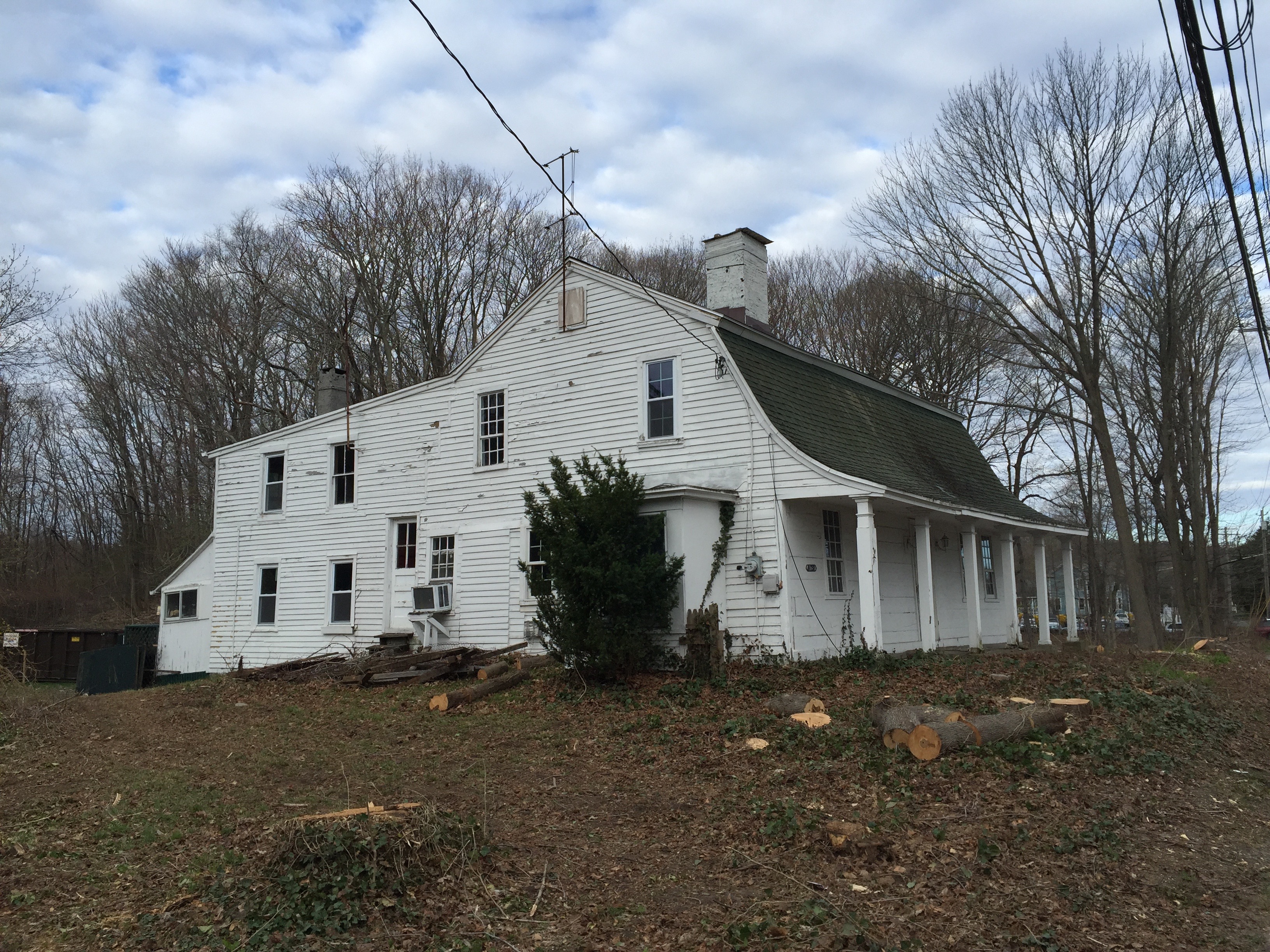
Photo by Martha Olson
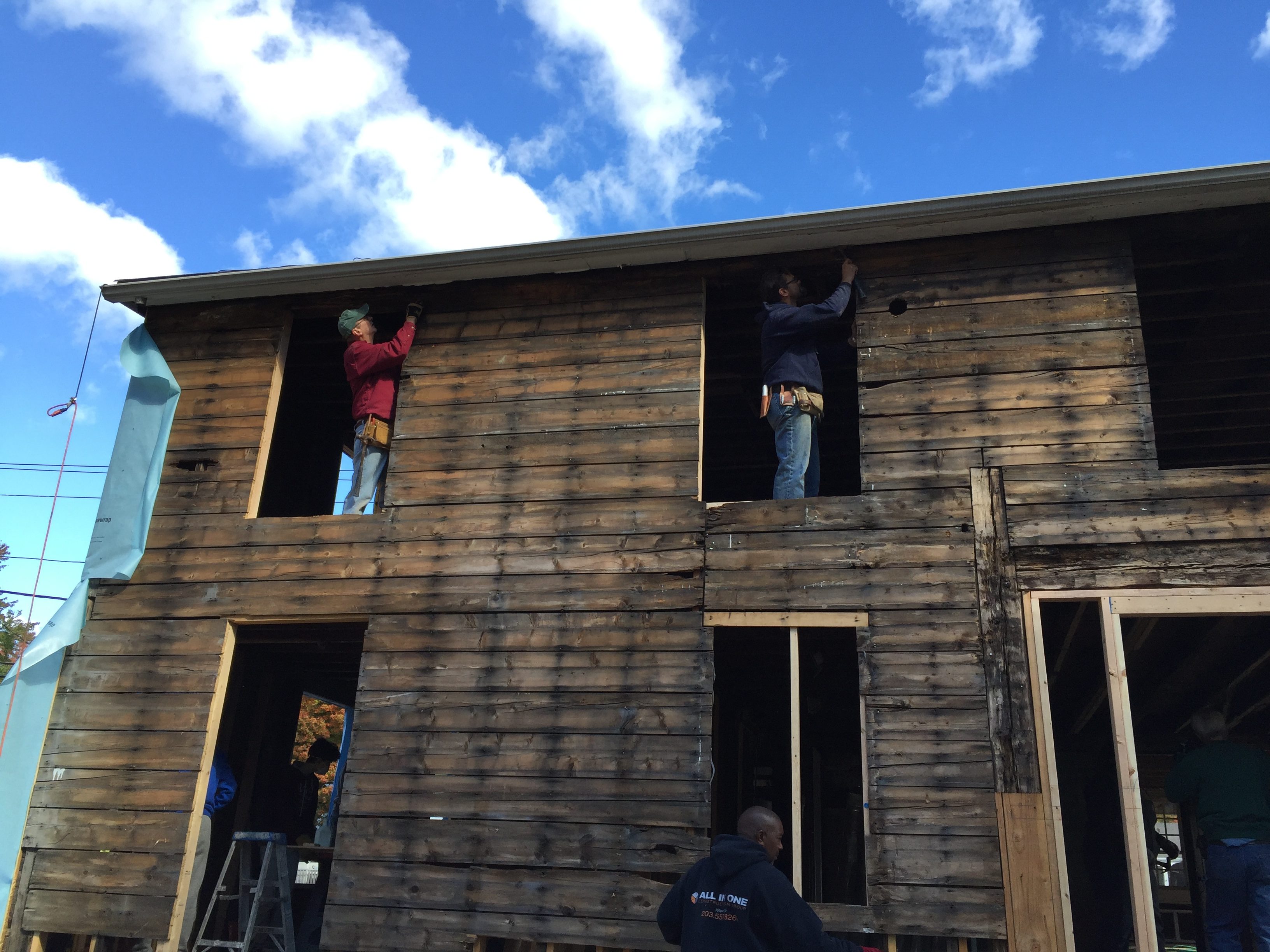
Photo by Martha Olson
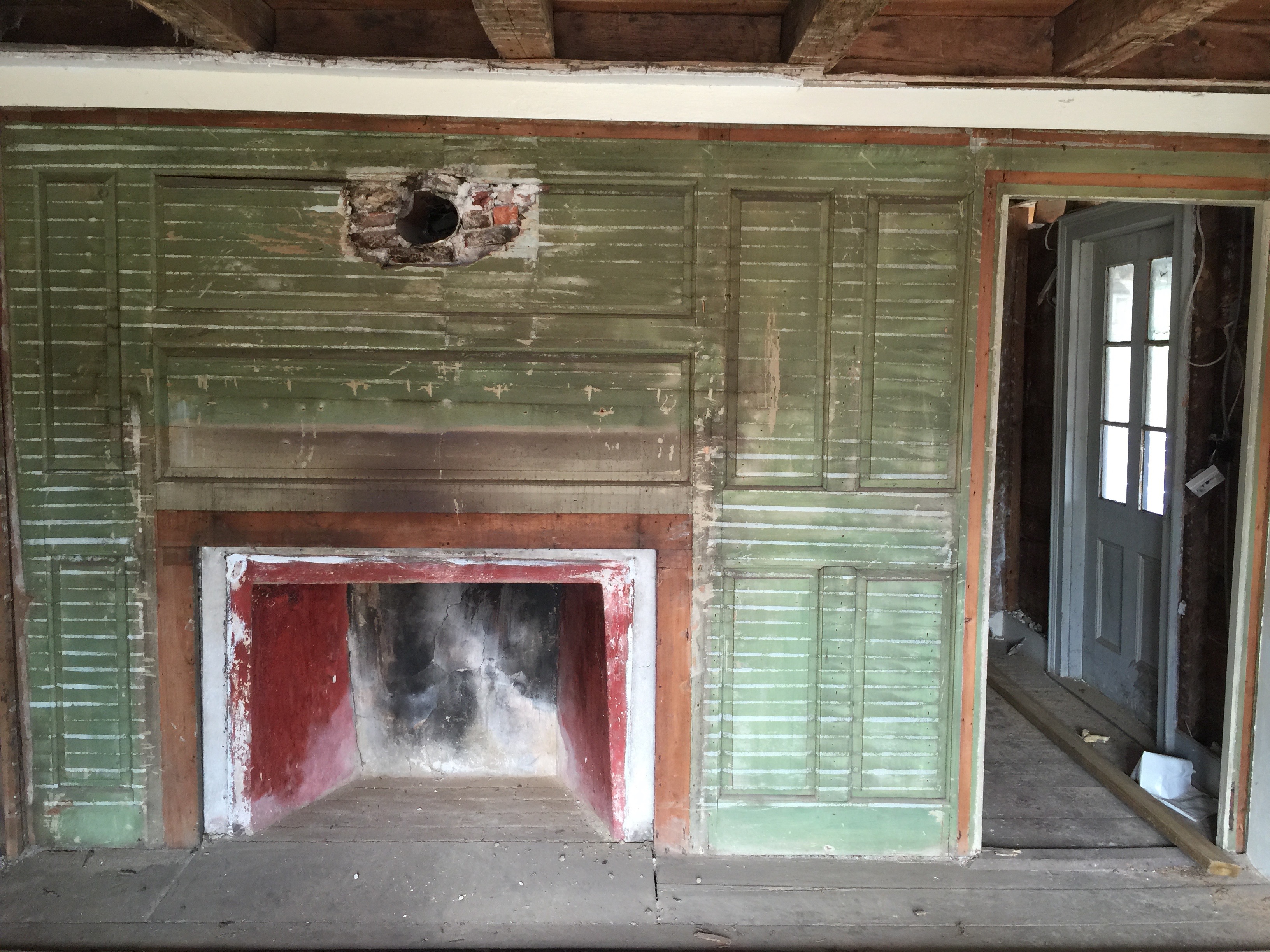
Photo by Martha Olson
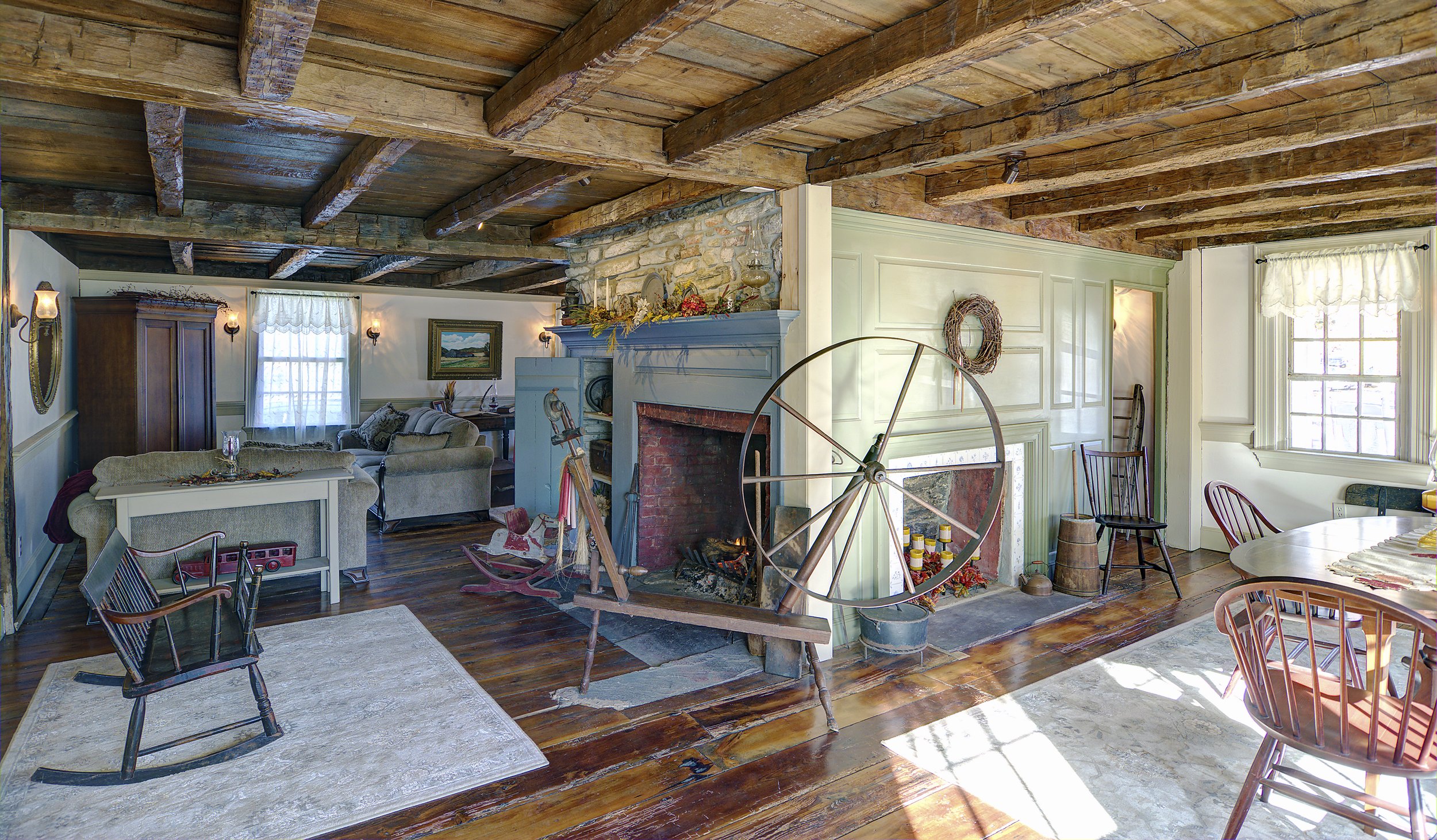
Photo by Brian Snyder
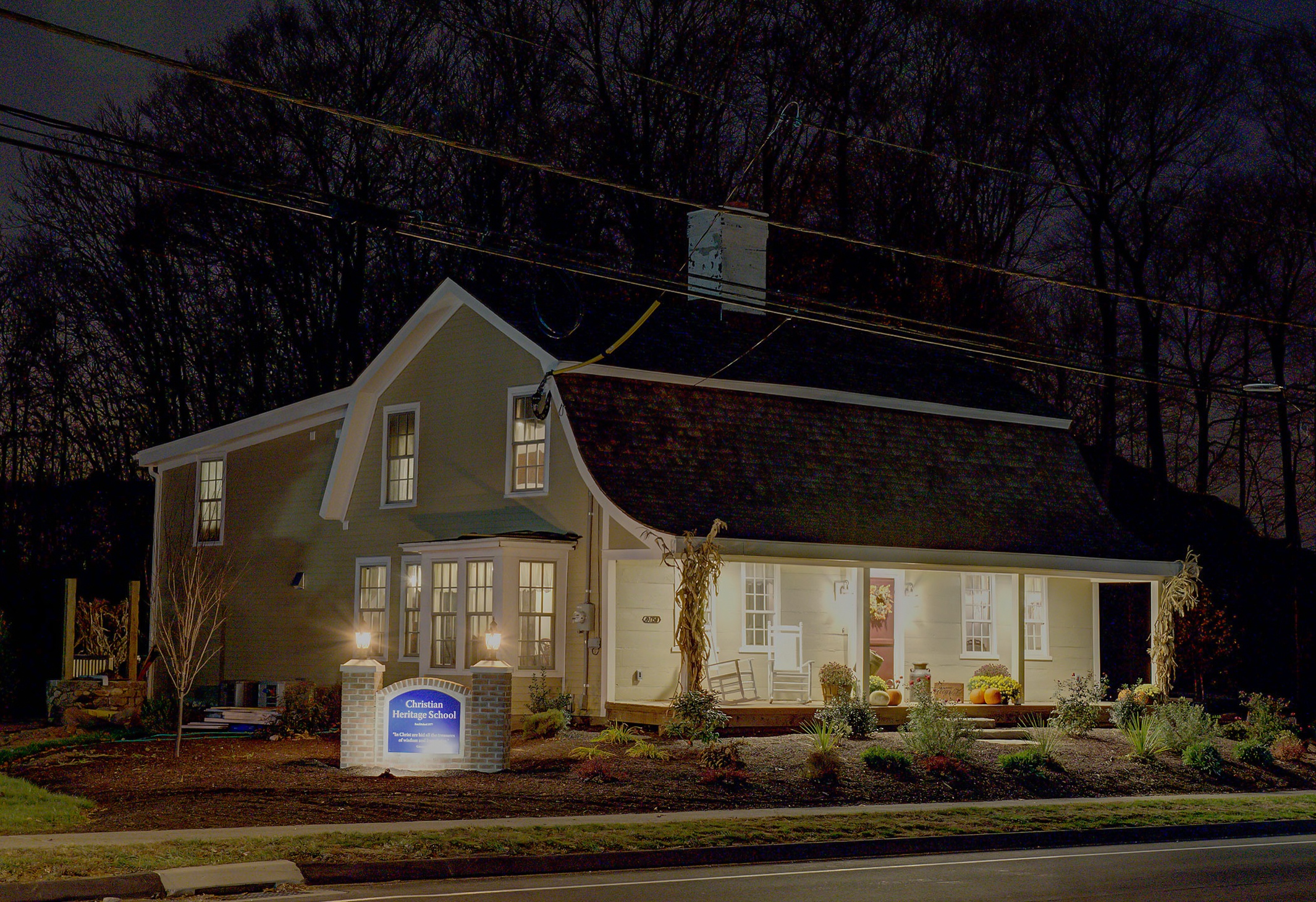
Photo by Brian Snyder
